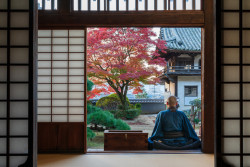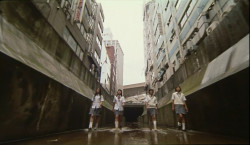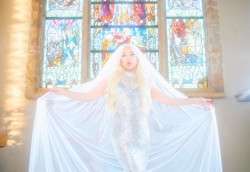
October 15, 2009
Zoo
Originally published on metropolis.co.jp on October 2009 Hirotaka Adachi was just 17 years old when he had his first story published. “Summer, Fireworks, and My Corpse” was the grisly tale of a 9-year-old girl’s attempts to dispose of her friend’s dead body after killing her—narrated by the deceased herself. It served as a fitting statement […]
By Metropolis
Originally published on metropolis.co.jp on October 2009
Hirotaka Adachi was just 17 years old when he had his first story published. “Summer, Fireworks, and My Corpse” was the grisly tale of a 9-year-old girl’s attempts to dispose of her friend’s dead body after killing her—narrated by the deceased herself. It served as a fitting statement of intent for a writer who has made a career out of probing the danker recesses of human nature with all the enthusiasm of a child picking at a scab.
Though he has released a few full-length novels since then, Otsuichi (his pen name, written 乙一 in Japanese, was inspired by his Casio Z1 pocket computer) seems most comfortable working in short story format. His ideas are compact and punchy, expressed in a spare, to-the-point Japanese prose that’s ably translated by Terry Gallagher here.
To date, the author is best known to international audiences for Goth, a collection of interconnected tales centering on a pair of death-obsessed high schoolers, which was released in English translation by Tokyopop last year. Not to be outdone, Viz Media imprint Haikasoru is now putting out one of Otsuichi’s most celebrated books, just in time for Halloween.
The stories in Zoo range from whodunits to science fiction and horror. “Find the Blood!” is a twisted murder mystery in which the wealthy patriarch of a family must work out who was responsible for planting a kitchen knife in his back before he bleeds to death. By contrast, “Song of the Sunny Spot”—one of the strongest tales here—is a dreamy account of an android’s attempts to understand death in a world from which humans have vanished.
Still, it’s his horror work for which Otsuichi—and this collection—is best known. The protagonist of the title story receives a photo of his dead girlfriend every day, charting the course of her decomposition. In “Seven Rooms,” a young boy and his older sister awake in one of a series of cells whose occupants are held for six days then slaughtered. More grisly still is “The White House in the Cold Forest,” whose disfigured narrator is forced to live in a stable by his cruel aunt, and later builds a home of his own out of corpses.
“It’s darker than you think” says the book’s tagline, which is an odd way of putting it. In fact, even at its most grotesque moments, Zoo is more macabre than disturbing; not for nothing is Otsuichi popular with teenage readers. He doesn’t exactly make light of his topics, but nor does he dwell too long on their inherent nastiness, and some of the most unpleasant tales here also pack surprisingly upbeat endings.
If there’s a problem, it’s that Otsuichi’s imaginative powers aren’t always matched by the execution. “Kazari and Yoko,” about an abused girl and her spoilt twin sister, plods its way towards a conclusion that I defy anyone not to spot coming, while hijack drama “In a Falling Plane” aims for shocking but ends up settling for pat. The characterizations are also unconvincing at times: would a 10-year-old really come out with a statement like “I thought to myself, this is what the true human form must have been like, way back when, long before we were born, long before the beginning of history”?
All the same, for the most part this is an entertaining slice of nastiness—and the sheer barminess of stories like “Words of God” is enough to make me forgive Otsuichi pretty much anything.







